I returned to my home country of Scotland after 15 years overseas just as COVID-19 closed borders. For many, lockdown in the Scottish countryside wasn’t that different. I was fortunate to have an outdoor playground on the other side of my door where I could roam freely for miles without rubbing shoulders with others. I spent summer evenings wild swimming, foraging in woodlands, and trekking more mountains in two years than I had in my entire life.
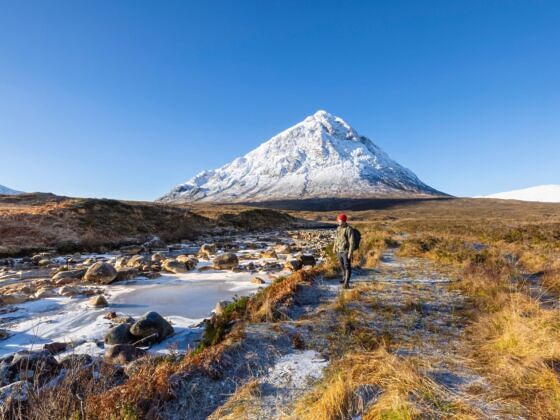

Why Scots Are Obsessed With Bagging Scotland's 282 Munro Mountain Peaks
Particularly when it comes to the last activity, it appears I was not the only one. Instagram was flooded with pictures of friends and family summiting Scotland’s 282 Munros — a designated group of mountains that are over 3,000 feet high. Scotland seemed to have caught “Munro fever.” Due to my absence from my homeland for most of my adult life, I put this down to COVID-19 restrictions. Although this was a catalyst, little did I know how integral hill walking is to Scottish culture.
What are Scotland’s Munros?
Scotland is home to thousands of mountains and hills, but only 282 have been granted the status of a Munro. They are named after Sir Hugh Munro, a founding member of the Scottish Mountaineering Club, who surveyed and cataloged the peaks in his 1891 publication, Munro’s Tables. The list is frequently checked and revised (resulting in some being scratched off) by the Scottish Mountaineering Club following the exacting nature that Munro employed when taking his measurements.
Munros vary in difficulty, from those you can summit with a general fitness level to snow-capped peaks and razer sharp ridges where you need a high level of climbing experience and the nerves of Sir William Wallace.
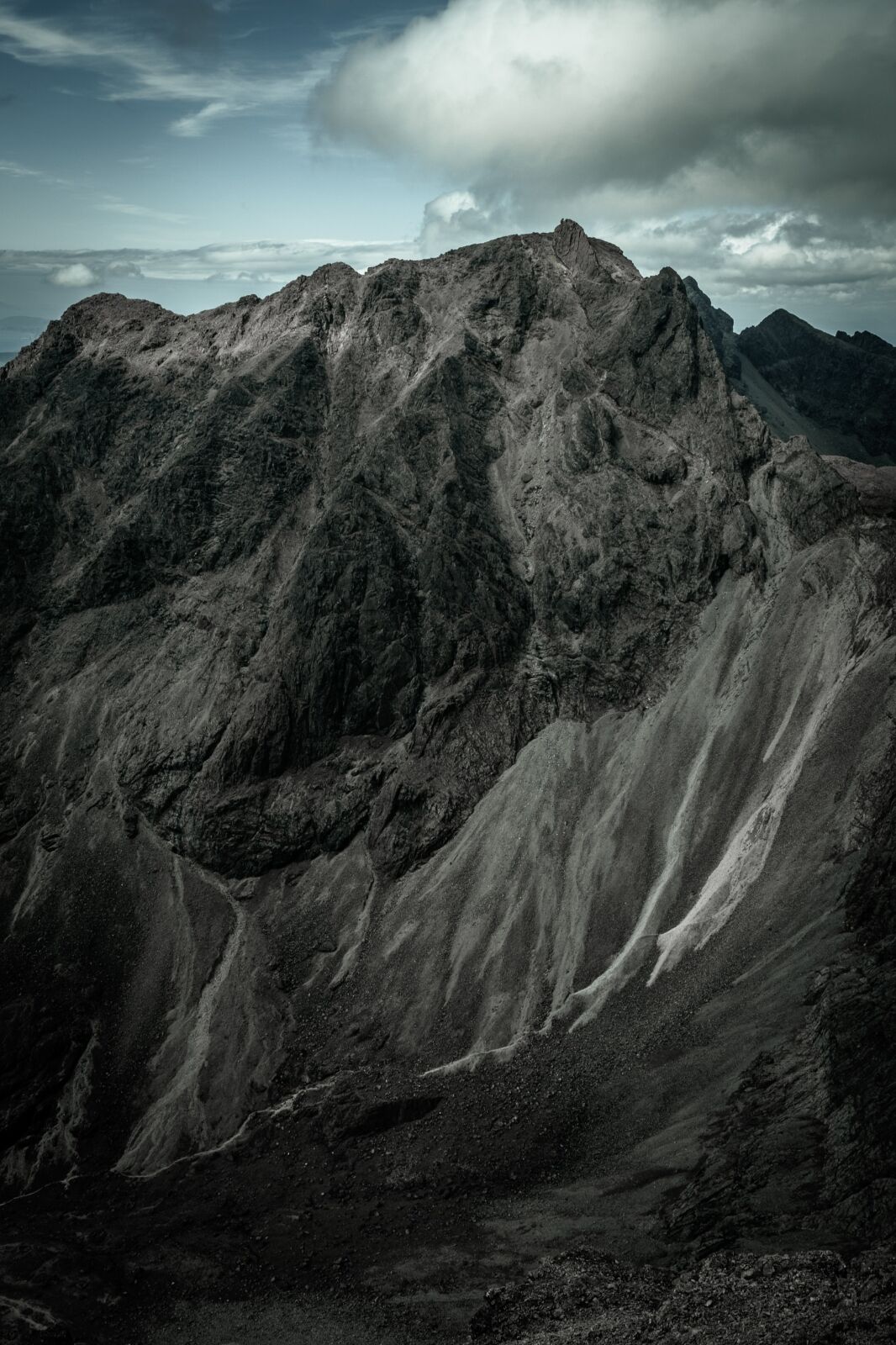
Sgurr Dearg the Inaccessible Pinnacle on the Cuillin Ridge, Isle of Skye is regarded not only as the hardest Munro to attain, but also the most difficult major peak in the British Isles. Photo: Jez Campbell/Shutterstock
The challenge of climbing all 282 is known as Munro bagging. It has become a fascination for hikers worldwide, particularly as bagging all 282 earns you the respected title of Compleatist or Munroist. Over 6,000 people have completed the Munro rounds, and there are extraordinary feats such as that of ultra-runner James Aarons, who currently holds the fastest round record at just 31 days, 10 hours, and 27 minutes.
Having a dozen or so in our pocket is still worth a humble brag for us mere mortals. Climbing in Scotland is more than ticking routes off the list. It’s a chance to get out into Scotland’s wild beauty and visit parts of this diverse country and its islands. Walking in Scotland allows you to experience some of Scotland’s finest iconic natural features, such as lochs, glens, and heather-covered moors. A Munro climb could also take you to the extremes — the highest peak in the British Isles, Ben Nevis; the UK mainland’s narrowest ridge walk; the Aonach Eagach in Glen Coe; or Braeriach, a peak with an area that has been snow-free just five times since the 1700s.
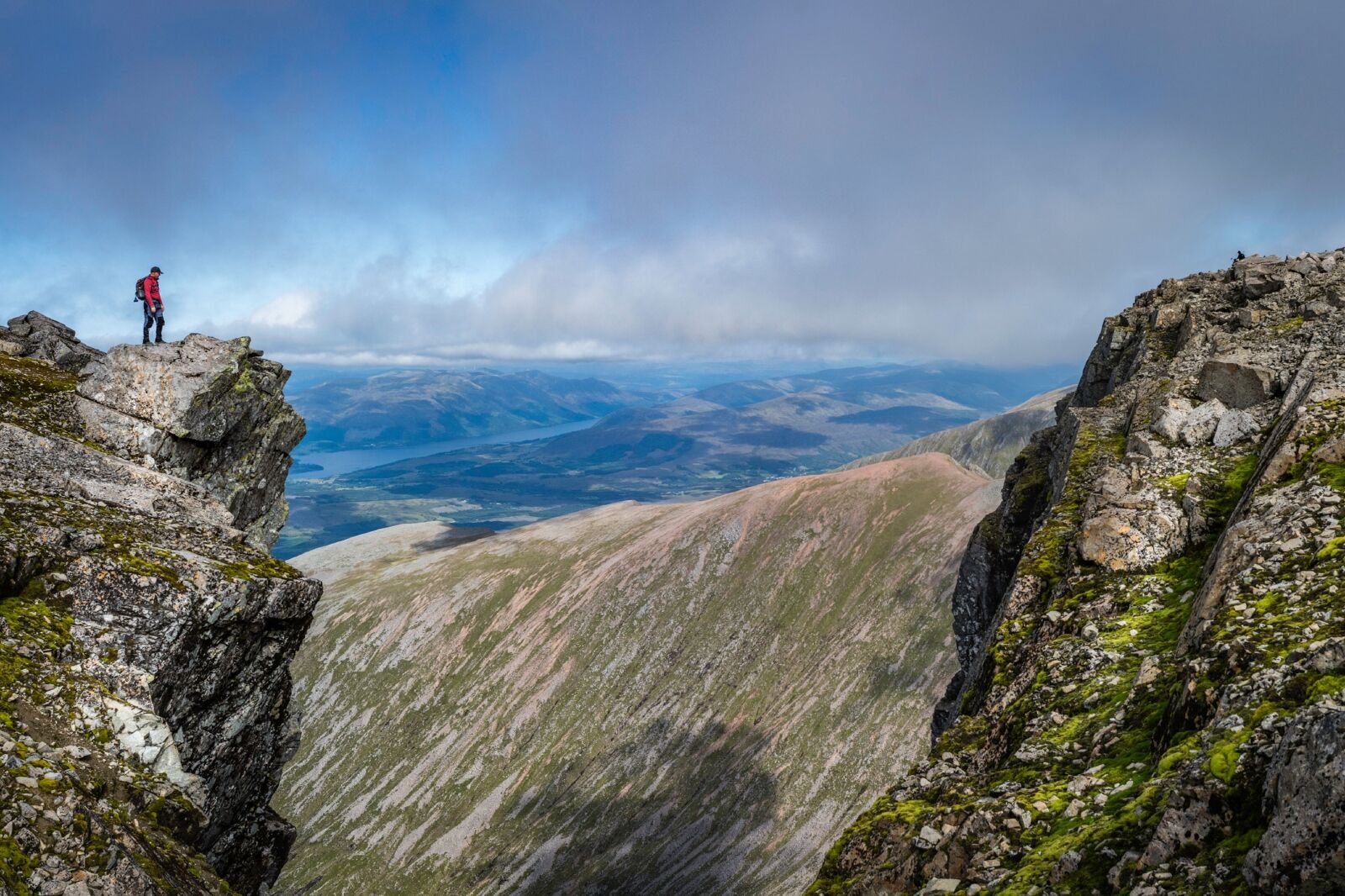
Ben Nevis, the highest mountain in Scotland. Photo: Brian Blades/Shutterstock
To better understand Scotland’s fascination with walking and to get some tips on bagging Munros, I spoke with Helen and Paul Webster, co-founders of one of the top walking resources in the UK, Walkhighlands, and the remarkable young Scot Scott Beveridge, who recently completed all 282 Munros over three years and four months at the age of 28.
Scotland is one of the best countries in the world for hiking
“Discover the real Scotland…one step at a time,” says the Walkhighlands homepage. The website is a bible for walking enthusiasts, with details of over 2,200 hikes across Scotland. Helen and Paul Webster, now in their early 50s, have dedicated the last 17 years to building the resource.
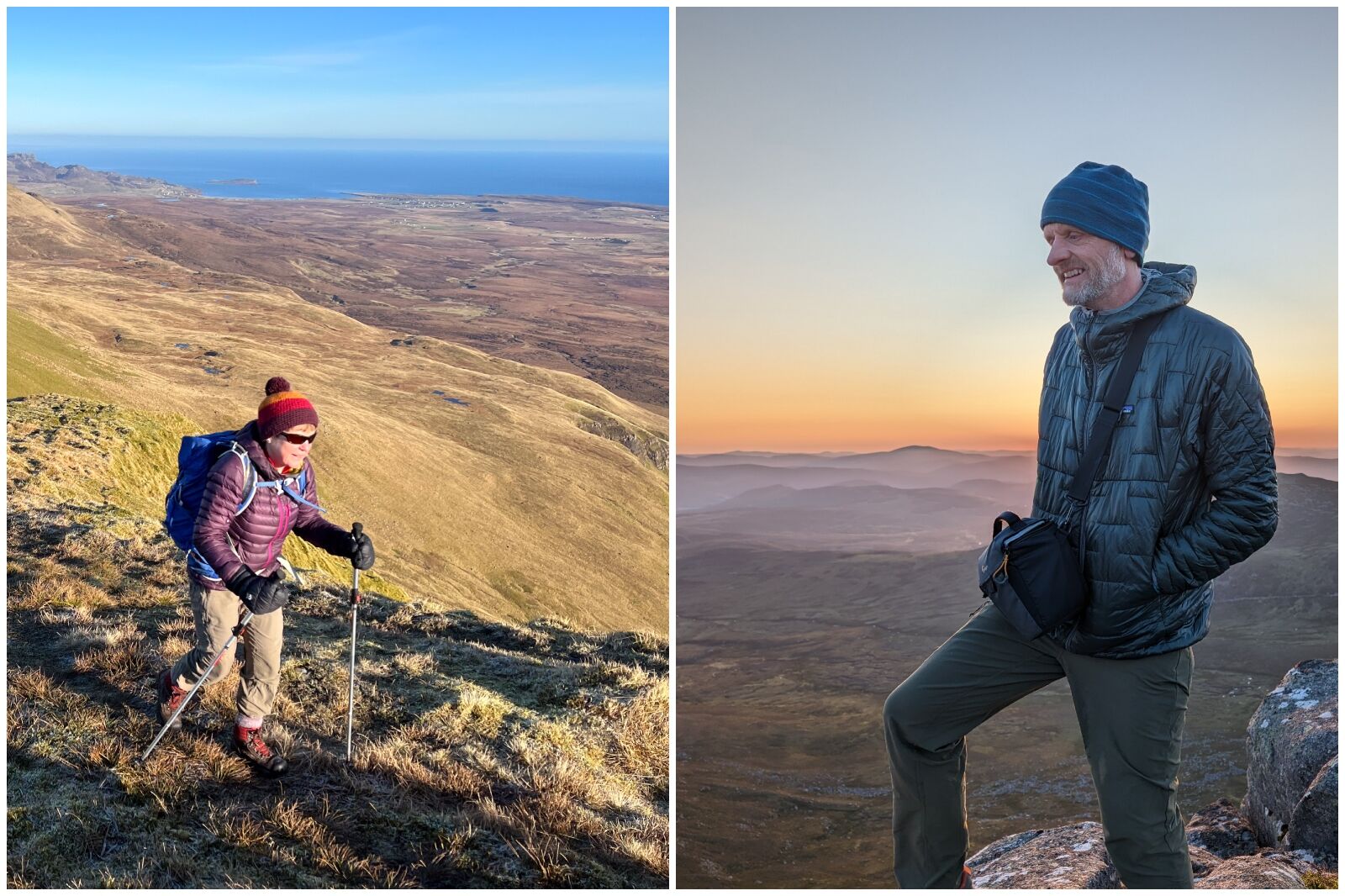
Helen and Paul Webster of Walkhighlands. Photo: Walkhighlands
The couple met through a hiking group. After taking a year off from their office jobs to hike 4,000 miles across Europe, they concluded that walking is the best way to experience any place.
“Going at a slow pace, you get to meet local people, see wildlife, experience the weather (good or bad), and have time to relax and soak up the scenery and natural environment,” say the couple over email. It also made them realize that they are not the only people who love to explore a country on foot. “We knew we wanted to try and base the rest of our lives on sharing how the outdoors can enrich our lives and encouraging others to get outdoors.”
Walkhighlands, which now has a helpful app where users can download maps and route descriptions to use offline (and see their location in real-time), has over 35,000 daily visitors. This is impressive not only considering the size of Scotland, but also because this community is thriving with members sharing their experiences, asking questions, gathering in person, and even a few who have tied the knot after meeting on a hike. The site and app are free, and the Websters state it will remain so.
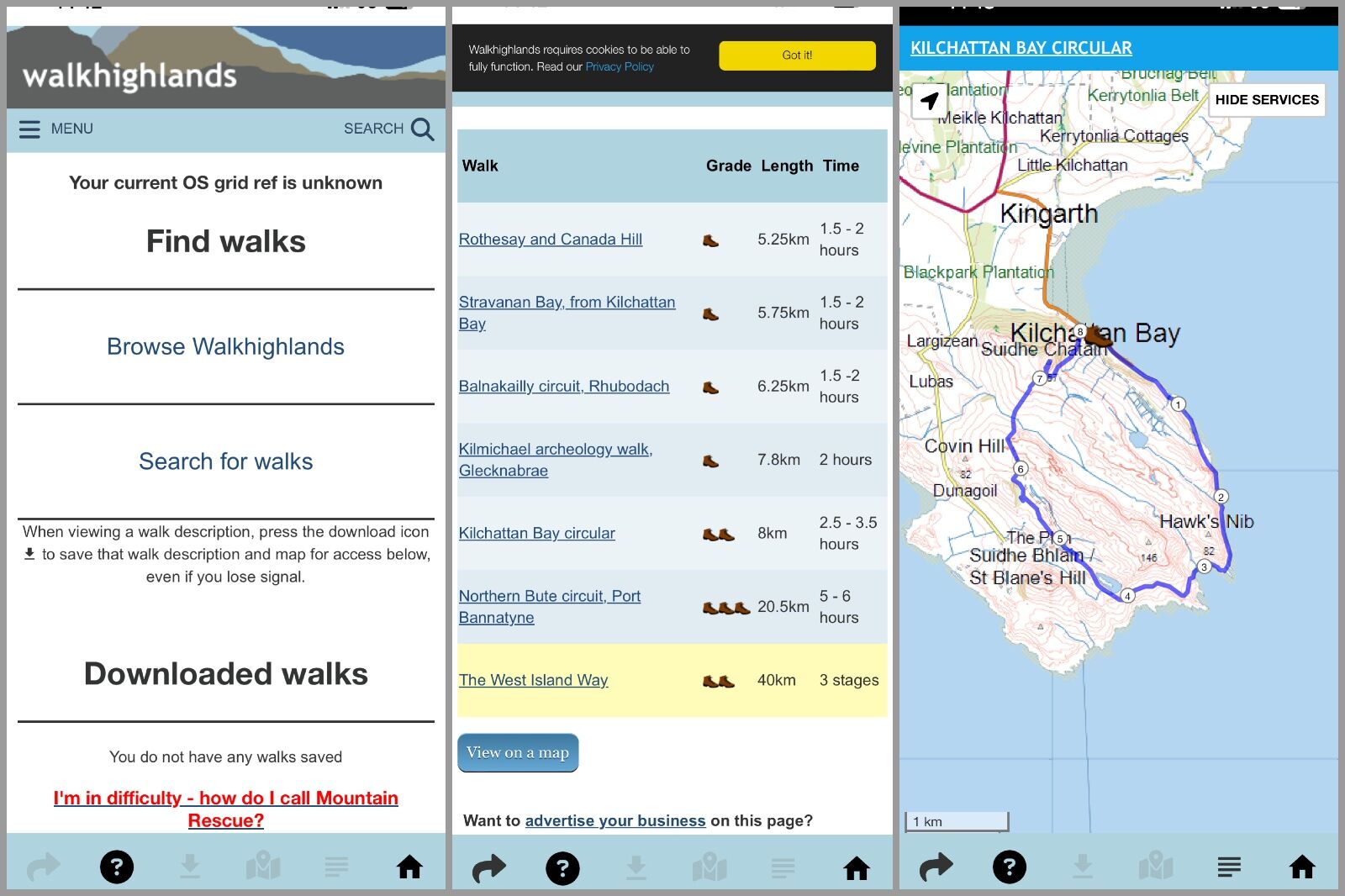
Walkhighlands’ app allows you to find walks in your area and download a detailed routes to your phone. Photo: Walkhighlands
Due to Scotland’s diverse topography, there’s a walk for all experience levels, from a coastal stroll to a challenging Munro. That’s one of the reasons why it’s one of the best countries in the world to adopt slow travel. Walking for the Websters is the “purest form of slow tourism.” It allows time to decompress and fully take in the people, nature, and the climate of Scotland. And even if the weather puts a damper on things — trust me, it’s as unpredictable (or perhaps as predictable) as the Scotland rugby team — it always provides a talking point.
In so many ways, the landscape is part of the identity of Scots.
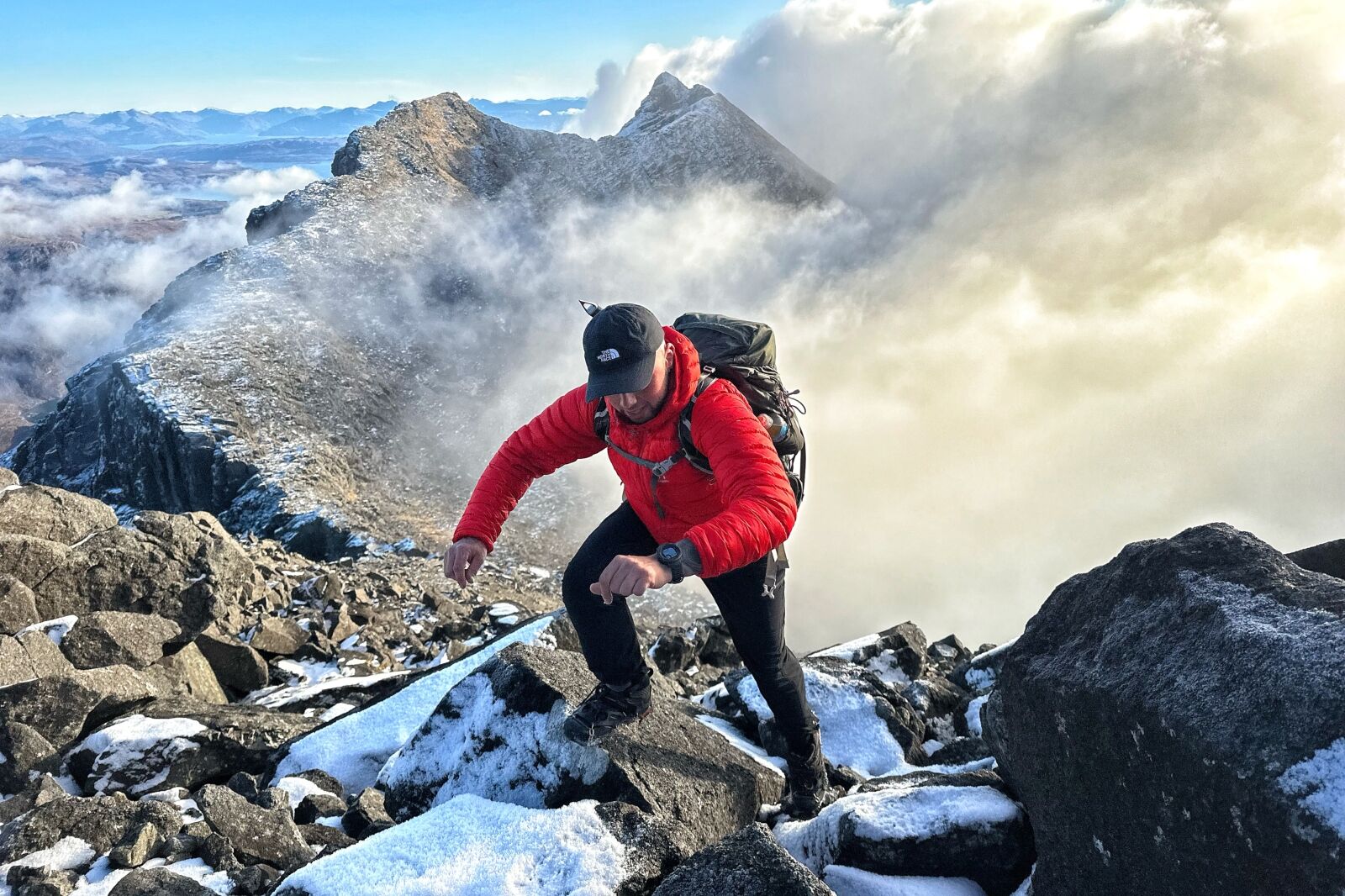
Scott Beveridge climbing Sgurr Dubh Mòr in the Isle of Skye. Photo: Scott Beveridge
Hiking is widely accessible in Scotland, thanks to our right to roam laws, which allow people to access most areas of the Scottish countryside. These are a blessing to Scots. They come with understandable limitations, especially regarding farmland and private gardens, and a list of rules set out in the Scottish Access Code. These regulations are “common sense rules,” say the Websters. Walkhighlands is again a superb resource for reading up on the code.
Why are Scots so obsessed with bagging Munros?
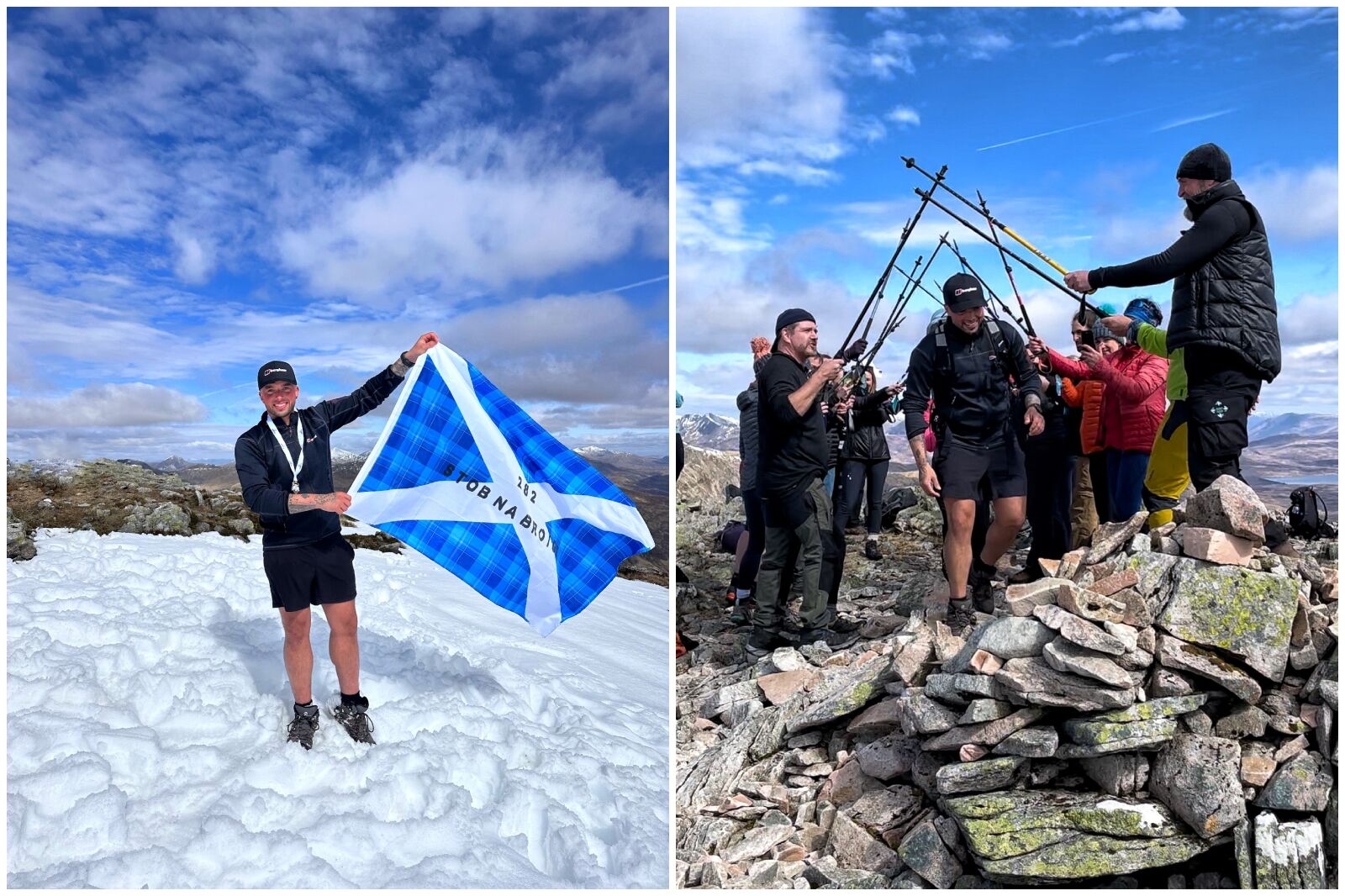
Scott Beveridge summiting his final Munro, Stob na Broige, in Glencoe. Photo: Scott Beveridge
On April 20, after three years and four months, Scott Beveridge summited his final Munro, Stob na Broige, in Glencoe with the support of his friends and family. This was a life-changing experience for Beveridge, who shares with me that he was feeling overweight and unmotivated about life at the beginning of his journey.
He bagged his first Munro, Ben Vorlich, with his sister in 2017, but it wasn’t until COVID-19 that he truly started his challenge. “I soon became addicted to the beautiful views and the way it helped me physically and mentally,” he says. Beveridge is not the only Scot who takes to the hills to support their wellbeing. I often walk through worries, and over the years the mountains have been therapy for me.
Although many Scots have a Munro or two they can boast about, the number of Compleatists is humble because it is extraordinarily hard — physically and logistically — to climb all 282. Factor in the sacrifices you need to make, and reaching this goal in a lifetime is impressive. Doing so in a handful of years is remarkable.
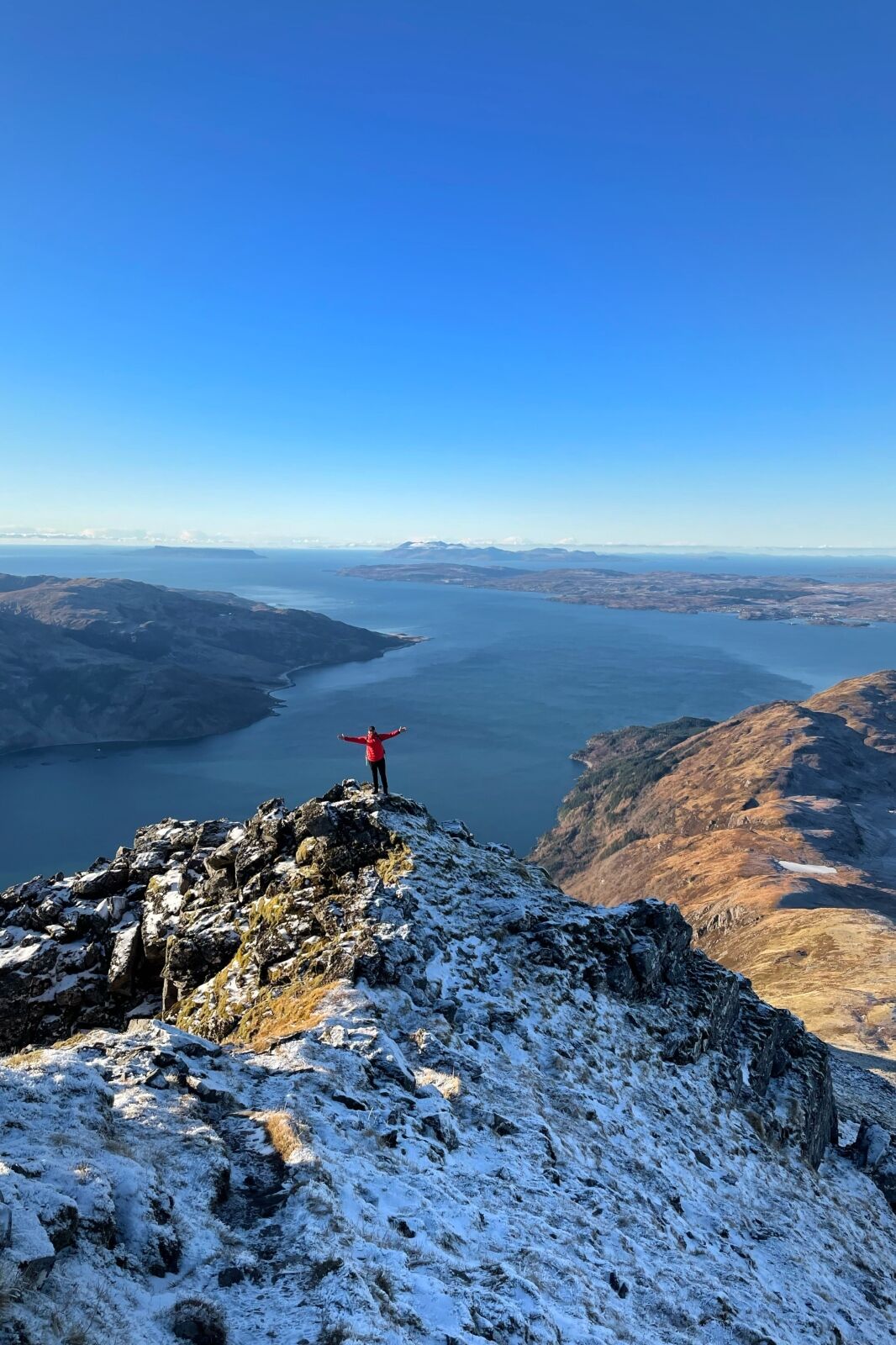
Beveridge on Beinn Sgritheall that towers above the tiny village of Arnisdale on Loch Huorn. Photo: Scott Beveridge
I spoke with Beveridge about some of the more challenging times on the mountains, the long drives, navigation, and the physical endurance needed for the more complex routes. “My biggest day on the hills was The Mullardoch 12.” On this day, Beveridge summited 12 mountains over 22 hours. “It was over 35 miles with a total ascent of 5,000 meters,” he continues.
One of the hardest Munros is the Inaccessible Pinnacle on the Isle of Skye. Although this includes a hair-raising rock climb and abseil, it was one of Beveridge’s favorite days.
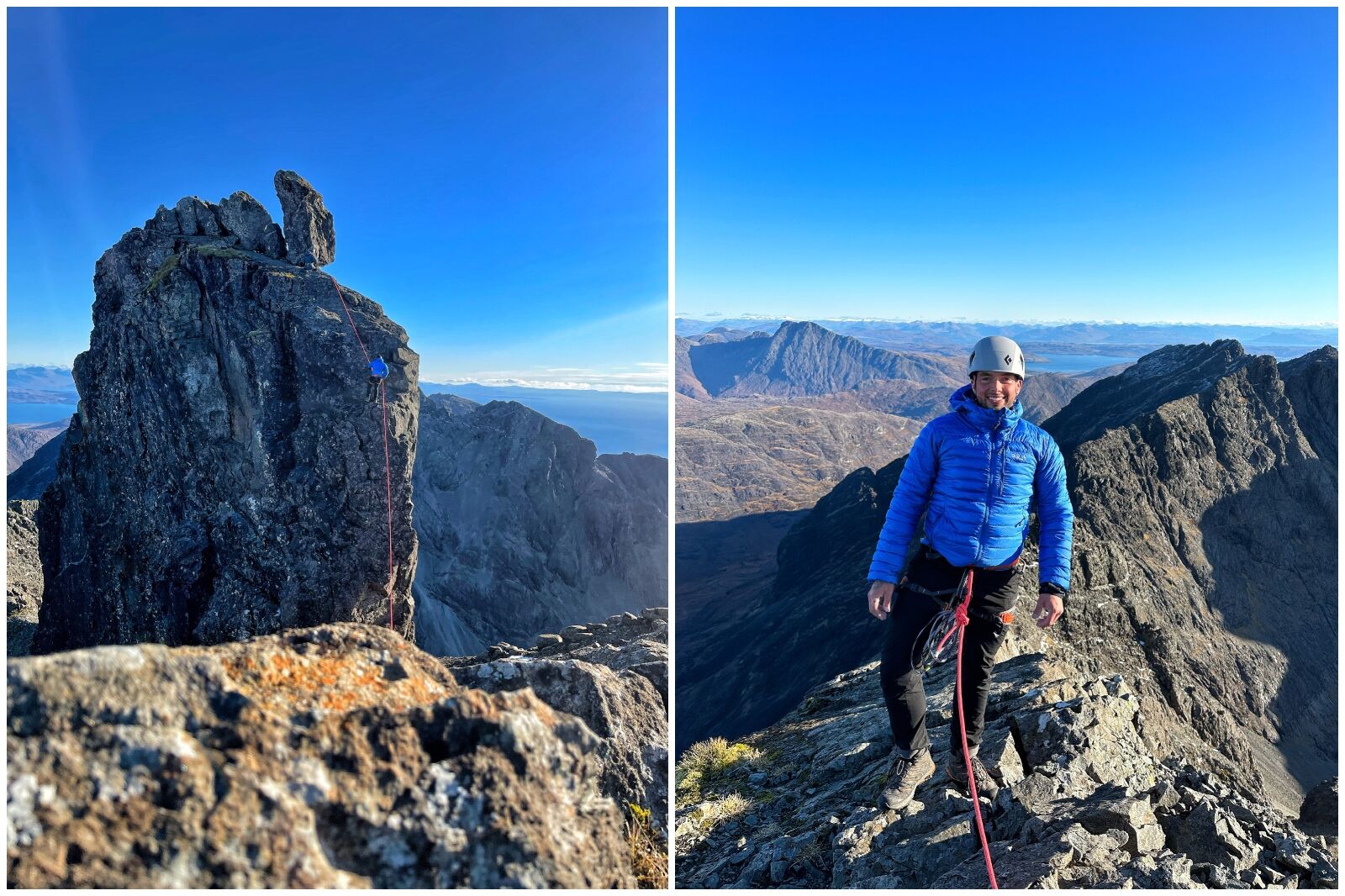
The Inaccessible Pinnacle. Photo: Scott Beveridge
Beveridge says there’s something addictive about hill climbing, and he didn’t stop at 282 Munros. The now 29-year-old recently smashed the UK’s Three Peaks Challenge, which involves climbing the three highest peaks of Scotland, England, and Wales. Beveridge did this with friends in under 20 hours, raising over $2,500 for Neuroendocrine Cancer UK in honor of his father, who suffers from the disease.
If you want to try a Munro, check out Beveridge’s Instagram. It’s inspirational, to say the least, and he’s doing it all over again, “I’m nine Munros into round two,” he says.
Tips for visitors considering bagging their first Munro
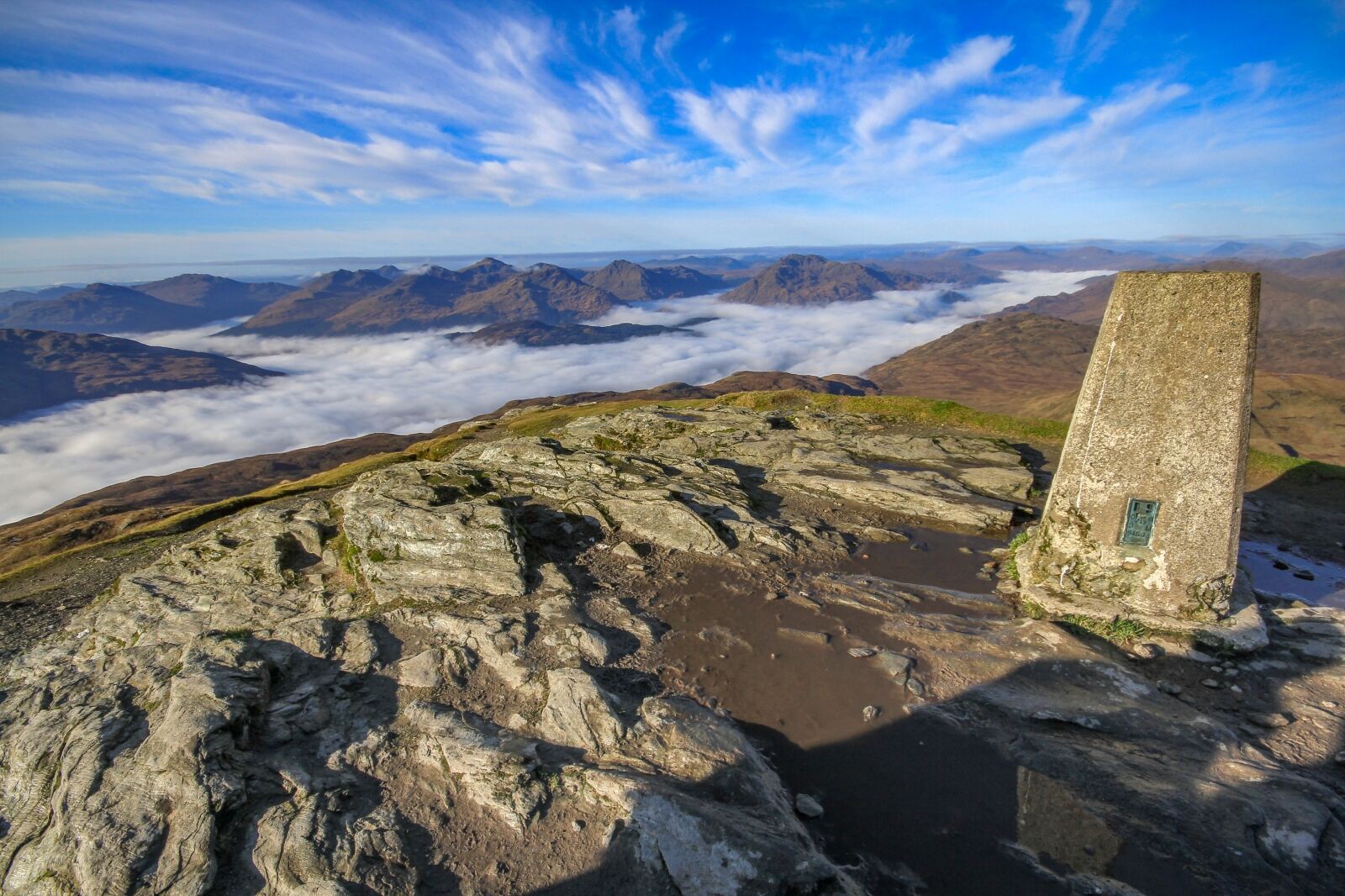
Ben Lomond is the most southerly Munro. At 3,193 feet, it’s one of the most popular in Scotland. Photo: Pete Stuart/Shutterstock
Taking on the challenge to climb a Munro or two on a trip to Scotland is more than doable. Here are a few tips from the Websters and Beveridge.
- Make sure you can read a map and compass: As the Websters advise, many UK routes lack waymarking or formalized trails. To navigate these, it’s advisable to download the Walkhighlands app and save maps offline. This is particularly important as cell signal in remote areas of Scotland can be unreliable.
- Try an easier route first: The Websters suggest starting with Ben Lomond, overlooking Loch Lomond. It’s the Munro most Scots have bagged. There’s a clear path, and you don’t need to train (although a reasonable fitness level is required). It’s also close to Glasgow, making it an easy day trip if you’re staying in the city.
- The weather will make or break your experience and is likely to change: Scotland can have all four seasons in one day. That means you need to dress appropriately and layer up. Try not to let a little rain deter you. If it does, you’ll never get outdoors in Scotland. Remember, the Websters add, that it’s much windier at the top, so pack everything you need in your day pack. Of course, there might be circumstances when the weather changes suddenly, and if this is a concern, always turn back. In winter, you’ll need appropriate gear. In some instances, this will mean crampons and an ice axe. If you’re not a well-seasoned climber, venturing out in the colder months is not advised.
- Get a support group: Walkhighlands has a great community of experienced climbers who often meet in person, so consider teaming up with a group of locals and like-minded folk. You can also hire a professional guide, even for leisurely climbs, who can share knowledge of the area’s route, wildlife, and history.